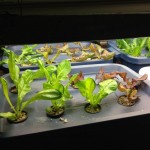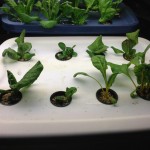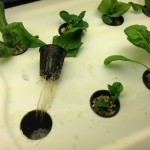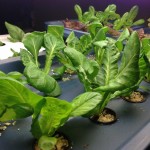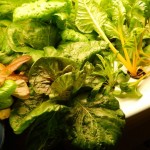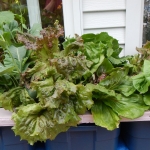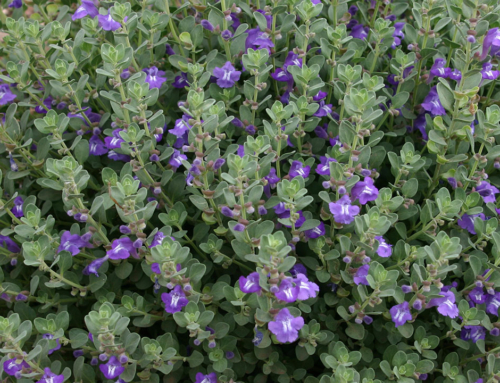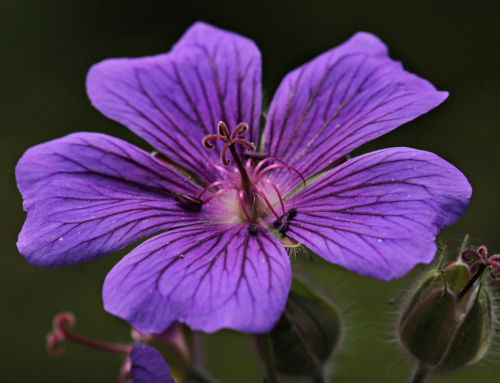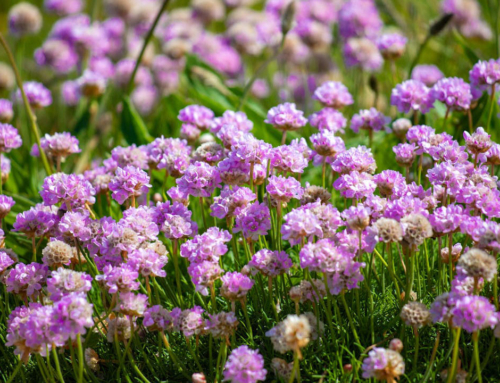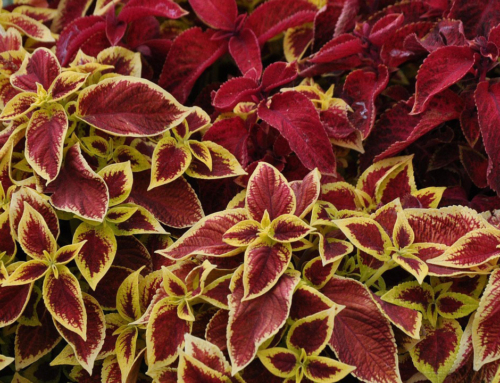By Larry Cipolla, Hennepin County Master Gardener
I love working in my gardens. The smell of well-conditioned soil in the spring is great. I love growing my own food. And, just because, I want to know what’s in my food and where it came from.
Last year I planted my regular vegetable and herb gardens and 40 containers. With time on my hands, I also set up a hydroponics system, thanks to Tom Michaels from the UMINN. Wow! Talk about easy to do. I had a continuous harvest of salad greens throughout the summer and early fall.
I set up the hydroponic system on my deck, east side, and on some wooden horses to keep everything about waist high (no bending!). I was so impressed that I decided to set up the system in my basement in October. I have had a continuous harvest of salad greens since last November. Each night I harvest the pesticide-free and critter-free leaves for dinner. I ask you, can it get any fresher than that especially during the winter? And especially after this winter! Are we done yet?
My first crop is almost finished. I will set-up my second crop this week, which should give me another fresh supply of salad greens into early May.
There are several different hydroponic set-ups to choose from. You can make them out of wood, lined with a water-proof liner. You can use plastic storage bins. You can include an aerator or not. I use 4 storage bins vs. a 2’X4’ wood tray unit. I can grow 36 plants in a 30”x60” space. Very nice! Compact. Very portable.
Materials. Most of your materials will be a one-time cost. My set up includes ….
- (4) 10-gallon heavy-duty dark blue storage bins with covers, $16 total
- (1) Perlite, 4 cubic foot bag, $20
- (1) Peat moss, 2 cubic foot bale, $4
- (40) Net pots, 2” diameter, $7
- (1) 2.8 cubic foot sterile seed-starting mix (optional), $15
- (4) Shop lights with (8) T-4 fluorescent bulbs, $80 total
- (1) 2” hole saw, $3
- (1) Electric drill (from my tool box)
- (1) Floor fan (optional, from my basement)
- (1) Table to support the storage bins (from my basement)
- (1) 14 oz. hydroponic growing powder (11-6-16), $20
Getting started. You can start your seeds in a perlite (80%) and peat moss (20%) mix. Moisten the peat moss well and put the mix into each net pot. Plant 3-4 seeds per net pot. After the seeds germinate keep only one plant per net pot. This works well. However, I prefer to start my seeds in a sterile seed-starting mix. When the seedlings get their first true leaves, I remove them from the germination tray and gently rinse off the mix from the roots. I then place one plant per net pot in the perlite/peat mix. The peat moss retains moisture. The perlite supports the plant. The net pot holds everything together.
What to plant. Since last season I have successfully grown a wide range of lettuces, kales, dandelion (yes, it is very good!), chards, mache (vit), radicchio, kohlrabi, and turnips. Also consider arugula, pac choi, mustard greens, collards, beets, and spinach. Lettuces and most leafy vegetables are the easiest. Regardless, select vegetables (and herbs) that have a vertical growing habit vs. one that creates a head or tends to spread. There are space limitations. You can grow larger varieties such as tomatoes, but you will need a much larger container unit than a net pot and a 10-gallon storage unit! Start small. Start easy. Start learning. Start now!
Preparing the storage bins. The dark blue color helps prevent algae from forming in the hydroponic solution (when I use the system outside in the summer). A heavier 10-gallon storage bin keeps the sides from bulging (due to the water/solution pressure). I use my drill and a 2” hole saw to cut out 9 evenly spaced holes in each bin cover. The net pots have a lip and fit perfectly onto each hole.
I mix 1 to 1.25 teaspoons of growing solution per gallon of water and fill each storage bin to about 2” from the bottom of the cover. This space provides air for the root system. The roots of the seedlings, which grow through the net pots, should just touch the solution when you first place them in the holes.
Initially, and for the first week or two, I water the seedlings from the top to give them a little extra boost. The solution level will drop as the plant grows. You probably will not have to add any new solution for a couple of months.
Lighting. I suspend four fluorescent lights about 3-4” above the seedlings and raise them as the plants grow. You can use grow lights. Or, you can use one cool bulb and one warm bulb in the same fixture. I set the lights for 16-18 hours per day and the floor fan for 8 hours a day. The fan is 6’ away. I use the fan to mimic the breeze (wind) the plants would normally experience outside. It also circulates the air in and around the plants, keeping them fungus free, while creating strong, sturdy plants.
Hydroponic Supplies. There are several supply locations in and around the metro area. Midwest Supplies in St. Louis Park is close to me and has a great selection of materials to choose from.
My on-going costs will be my vegetable seeds and the hydroponic growing powder. The perlite, peat moss, etc., should last me at least 10 years given the large amounts I purchased. Smaller amounts are available of course.
And that’s it. Once the net pots and seedlings are set in their respective holes, there is zero maintenance. No weeding! No bugs or slugs or earwigs or leaf miners to worry about! No bunny rabbits, moles or voles, or other critters to munch on your lunch! And no worries about hail or snow or frost or other nasties.
Start now! Give it a try. You still have plenty of time to set up a system and enjoy some fresh, great tasting greens in the dead of winter.
